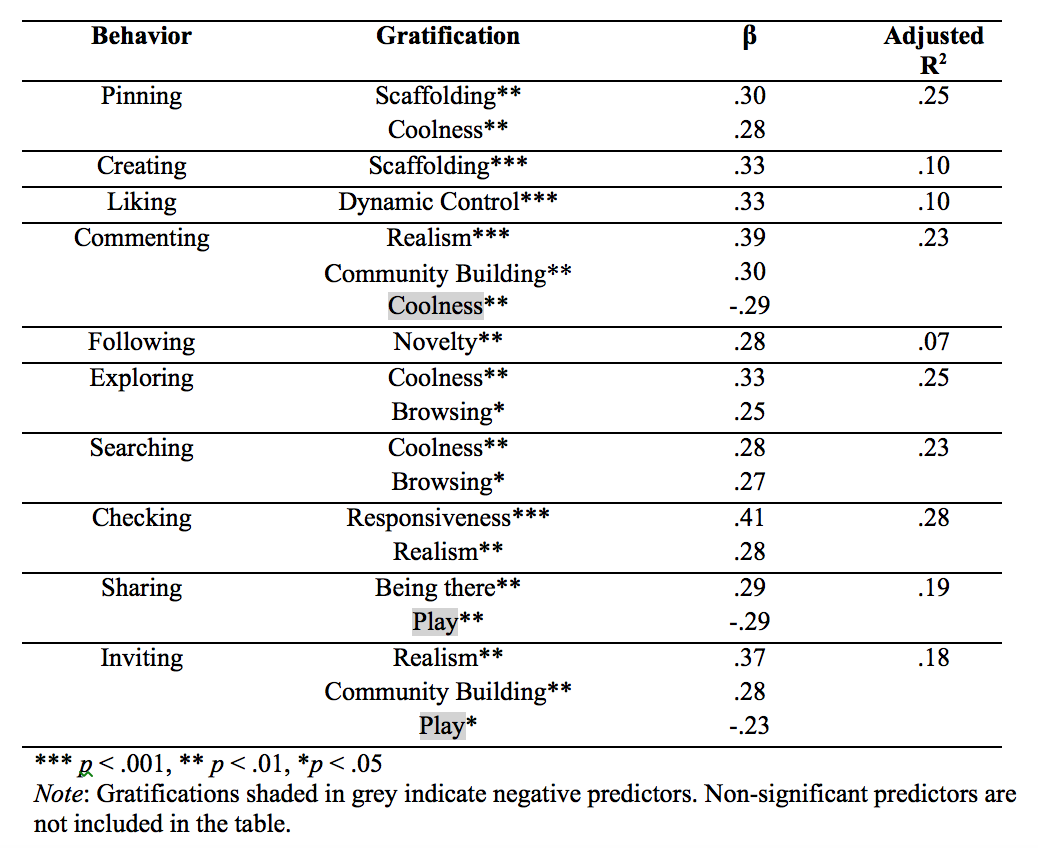Media Effects Research Lab - Research Archive
Why do we Pin? New Gratifications explain Unique Activities in Pinterest
Student Researcher(s)
Ruoxu Wang (Ph.D Candidate);
Fan Yang (Ph.D Candidate);
Saijing Zheng (Ph.D Candidate);
Faculty Supervisor
INTRODUCTION
This study examined why people use Pinterest from the perspective of uses and gratifications. Specifically, relationships among four technological affordances (MAIN model) and ten different Pinterest behaviors were examined. Findings of this study provided evidence for MAIN model being used as a new gratification scale to study new media uses.
RESEARCH QUESTION / HYPOTHESES
RQ: What are the relationships between motives and Pinterest using behaviors? Specifically, what motives predict the use of 1) pinning, 2) liking, 3) commenting, 4) following 5) creating a board, 6) browsing different categories, 7) searching, 8) checking notifications, 9) sharing, and 10) inviting other to create on one’s own board?
METHOD
An online survey was conducted in a major university in northeastern United States based on institutional review board (IRB) approval. Of the 113 participants, average age is 20.69 (SD = 1.01). More females (N = 66, 58.4%) than males (N = 47, 41.6%) participated in the study. The independent variables (IVs) are the four technological affordances of MAIN model: modality, agency, interactivity, and navigability. The dependent variables (DVs) are ten different Pinterest behaviors: pinning, liking, commenting, following, creating a board, browsing different categories, searching, checking notifications, sharing, and inviting others to pin the board I create. JMP 11 was used for analyzing descriptive and inferential statistics.
RESULTS

CONCLUSIONS/DISCUSSION
The repertoire of affordances in Pinterest caters to a wide array of user gratifications, thus explaining the widespread appeal of this social-media platform. The gratifications discovered in this study—ranging from coolness to scaffolding—are far more nuanced and informative than the broad “umbrella” gratifications typically identified by traditional uses-and-gratifications studies, such as information-seeking and passing time. Future research on uses of new and emergent media would do well to probe deeper and identify specific gratifications, as we have done here, in order to better understand the psychological appeal as well as behavioral adoption of those media.
For more details regarding the study contact
Dr. S. Shyam Sundar by e-mail at sss12@psu.edu or by telephone at (814) 865-2173

